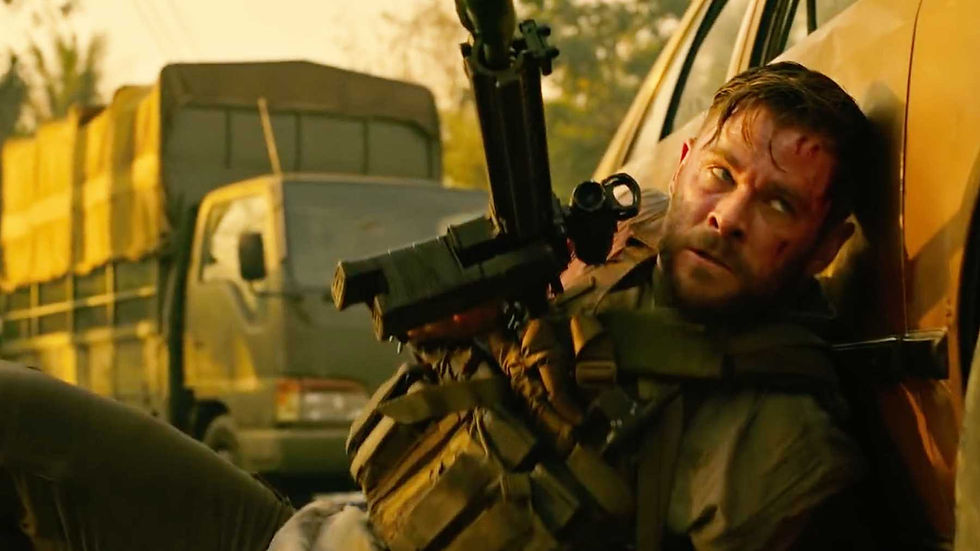Muslim representation in Western media
- Annum Shehryar

- Nov 30, 2023
- 3 min read

As most of us are aware of Muslim representations in Western media on how it manifests itself in popular stereotypes centring around terrorists, misogynistic men and oppressed women, many Muslim characters lack complexity and are stereotyped in crude and exaggerated ways. The media often portrays Muslims as violent, dangerous and extremist. Our community, especially the youth, would witness violent and religious images together which causes this link to form in our minds and allows us to internally generate and normalize Islamophobic beliefs.
A few examples of movies and shows which I remember that promote these derogatory beliefs are Aladdin, Elite, The Siege, Argo, Bard of Blood, Hala and many more. In Aladdin, Arab-American groups heavily criticized the depiction of Arab characters. The opening theme song showed that Aladdin hailed “from a faraway place, where the caravan camels roam, where they cut off your ear if they don’t like your face. It's barbaric, but hey, it’s home.” A scene showcased an Arab merchant who threatened a woman to cut off her hand for food theft for her starving child. This movie depicts Muslims stereotypically as Arab and through an orientalist lens, Muslims are seen as barbaric, not modern and in need of transformation. The Arab characters also had ridiculous and unrealistic accents. In Netflix’s Spanish teen show called ‘’Elite’’, the writers used the most basic, problematic and popular trope where a Muslim Woman rejects her faith by adopting Western values of ‘’freedom’’ by removing her hijab for her white boyfriend. This is harmful as it reinforces the ideology that Muslim Hijabi women are oppressed by Islam and are in need of a man to be their saviour. This idea also suggests that Muslim women are in danger and are in need of ‘’saving’’ from their modest lifestyle. The media fails to represent that Muslim women choose to wear the Hijab and do not need to take it off in order to be ‘’free’’. Another trope was in Jed Mercurio’s thriller where a Muslim woman is oppressed by her husband who is a terrorist, but as it progresses there is a plot twist that she is complicit as the mastermind of the terrorist himself. This negatively represents Muslims as potential suicide bombers and terrorists with extremist views.
Hollywood has had a massive influence in the way different audiences view Muslims. Muslims in Britain and many other foreign countries have felt negative images of their faith and this had consequences in their daily lives. Representation depends on who is in control of the narrative, who gets to be included and not, this can be linked with the class reading that was based on media literacy and how representation is one of its forms. Many of the directors and writers are non-Muslim men who often fail to do justice to the Muslim characters. Another movie trope which is discrete and is often overlooked is that American films tend to add a yellow filter over their films when they depict Muslim countries ridden by war as “polluted” and “impoverished”, reinforcing the stereotype that all Muslim countries are yellow stained terrorist lands. One example of this is in Netflix’s ‘’Extraction’’.

I hope that in years to come, we can take a step back and draw a comparison between what has improved when it comes to Muslim identities being more complex and more than two-dimensional, with more Muslim directors and writers with films we see now released. Realistic representation will be prevalent when narratives and Muslim characters are more nuanced than the binaries of what is “good” and “bad”.

What irritates me the most is the assessment of Aladdin's orientalist lens, in which Arab people are presented as savage and in need of reform!! I feel like I particularly loved the thriller trope you mention, which depicts a Muslim lady as repressed as well as participating in terrorism, reinforces the perception of Muslims as potential radicals. Like...pick a struggle!! The section on Hollywood's effect on worldwide attitudes stresses the real-world implications suffered by Muslim communities, going back to the power dynamics covered in media literacy. Muslims are so largely hated against and this notion is brought up over and over again through media– what do we, as minorities that are so largely hated, even speak up?
It's really interesting to see how you talked about representation of Muslims from a perspective that I haven't completely thought about yet. It's true that there is a major bias when it comes to the representations and the stereotype is definitely given into. I'm very curious about depictions where the representation is accurate, so if you have come across any, please do let me know!
I've had this discussion so many times with my sister that how the media's failure to depict the diversity and complexity of Muslim identities and experiences is poignant. There's a pattern of narrative control and who gets to tell these stories. It’s disheartening to realize how these skewed representations shape global perceptions, leading to widespread misconceptions and Islamophobia. The observation about the use of color filters in films to depict Muslim countries as "polluted" and "impoverished" was an eye-opening detail that speaks to the subtlety with which stereotypes can be reinforced. It demonstrates how even technical aspects of filmmaking can contribute to reinforcing stereotypes.
This post reminds me of the course reading about Muslim women's representation in media. I've noticed really loose and inaccurate representations of women in the media. An example I can think of is the movie "Yasmin". that I recall my family watching when I was very young. But I could still understand how the representation of Muslims was twisted considering the movie gained worldwide popularity. The show revolves around a woman named Yasmin, whose brother joins a terrorist group, and Yasmin herself finds solace and friendship in a white man, who swoops in as a white saviour for her. It's ridiculous because media really is a channel through which people across the globe perceive people from other nationalities and make…
Great post, quite well researched and thought out. I am an admirer of cinematography and your analysis of the yellow colour/tint used to depict muslim countries in movies combined with an arabic sound or music is the most enriching aspect for me. I think Stuart Hall's decoding and encoding framework comes greatly here as this yellow tint, reinforces this Arabian aspect as yellow depicts how sandy it is due to sand storms and how usually depicts, harsh hot weather and shows them as the "other" on the screen. This reinforcement of how a colour can show you that someone is inherently different from you, just reinforces all the stereotypes. Thank you for pointing something as normative as a yellow filter…